Hello everyone and welcome to another exciting Shattered Perceptions. This week we are continuing on last week, with the history of Commander and the perceived problem children of different eras. If you happened to miss out on last week’s article, I would go back and read that when you have the chance.
I will reiterate that the intent of these articles are not to highlight or demonize players, but to look back and educate people on the history of Commander through the lens of boogeymen. While some of my examples may focus on more personal metagames, I want to try to look over the entire format where I can. I don’t think the existence of a best deck is not bad or that a player should be unwelcome in the format, just that boogeymen have and do exist. My intention this week is to run through the generals that have either been printed in sets following Commander 2013 or got a second life through the discovery of a degenerate strategy coming to light. In fact, that’s exactly where I’d like to start.
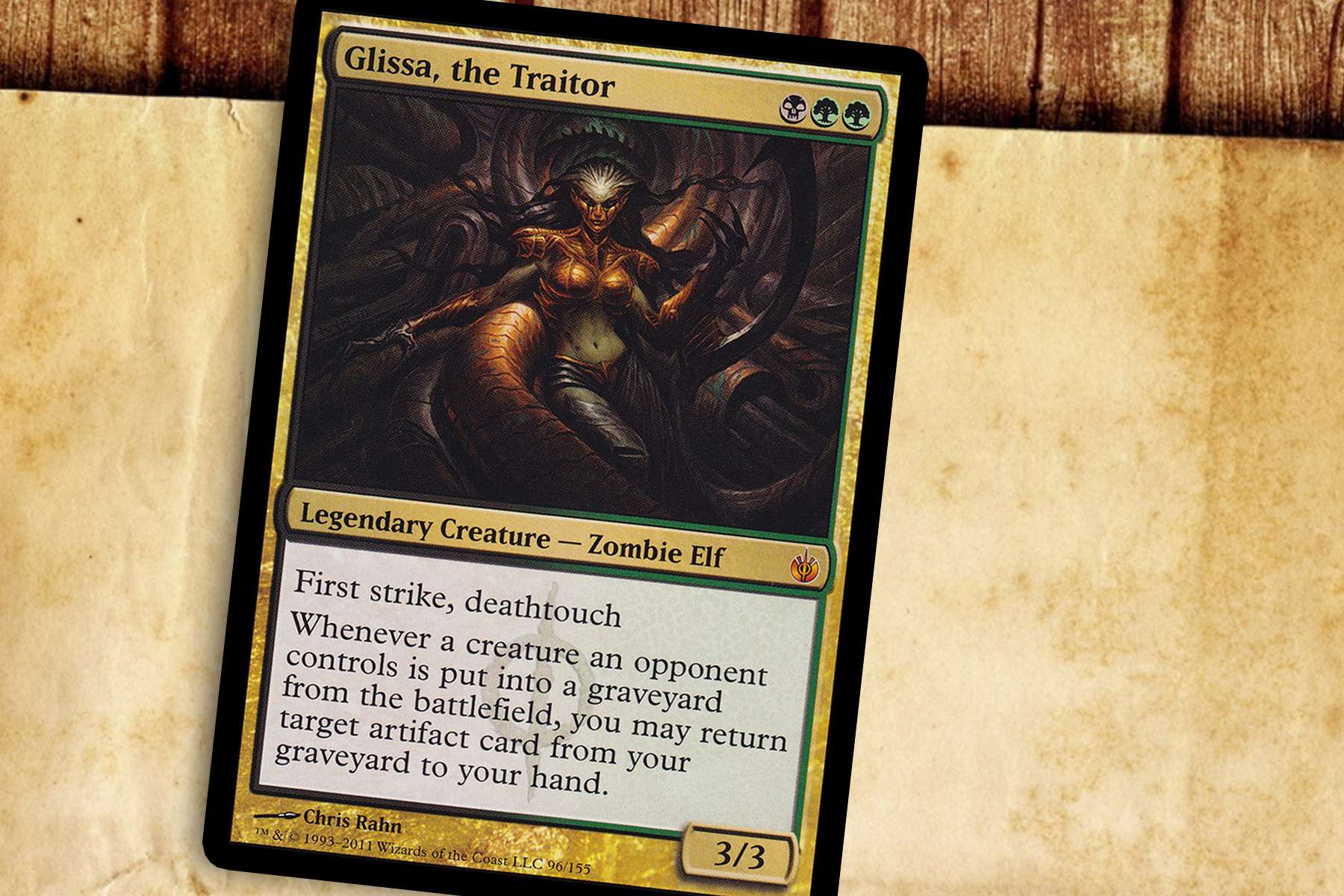
Glissa, the Tyrant
I previously talked about how in some cases, the generals in question were not complete metagame defining problems—see Prossh, Skyraider of Kher. These generals were more issues that caused the metagame to shift for a brief period and possibly never went viral in the Commander Community. Glissa, the Traitor was one of these decks in one of my shops.
While I don’t know the exact point where Glissa had been identified as the go-to general to helm a Stax style deck, I know that she crashed into my metagame in early 2014. I might point to Braids, Cabal Minion still being legal as a piece of your other 99, or it might have been Vraska the Unseen being printed as a versatile removal spell that turned into a victory condition if left unchecked. Regardless, the deck was strong, especially against the unprepared. It used cards like Tangle Wire, Winter Orb, and Mana Web to awkwardly minimize the table’s choices and strip them of resources.
Since most of the hard/soft locks are through artifacts, Glissa was the ideal general since anything lost can be brought back again. The deck was a miserable to play against—an hour and half to two hours of being mana screwed and waiting for a win condition to manifest or just have Glissa commander damage out the table. I would usually drop as soon as another game opened up.
Glissa blew in and out of my metagame in a matter of weeks, since it was run by one player running a deck in the mold of this and over time players simply refused to game against him. And honestly, that’s probably the right tack. If a playgroup doesn’t want to play decks that become hyper dominant in lieu of more casual games, they should be able to do that. In the right metagame, I can see where this deck could be accepted when all players come to fight on the same awkward axes.
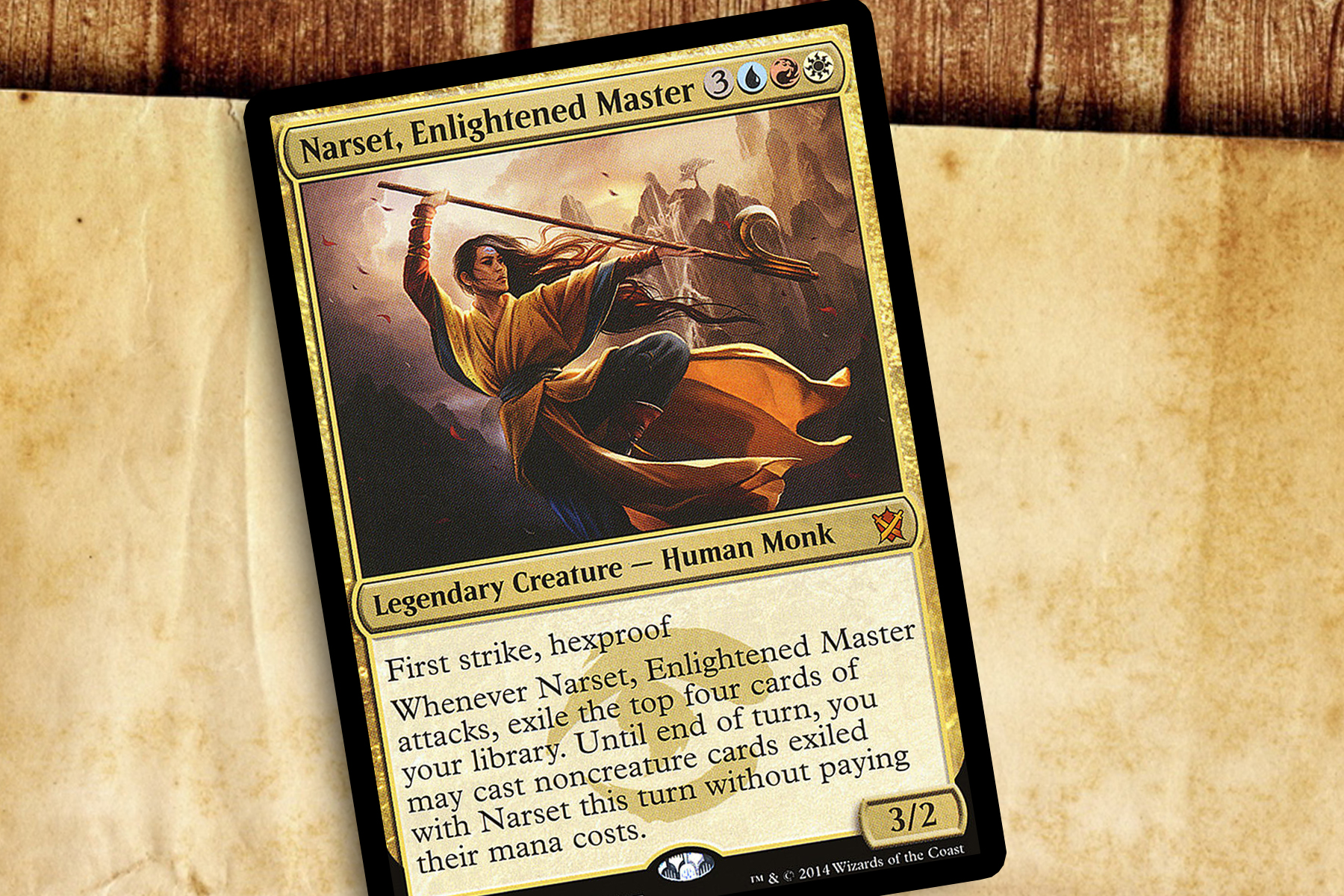
Narset, Oops… All Turns
Khans of Tarkir and the continued block were pretty great for Commander as a whole. We got a huge influx of wedge commanders and spells, a healthy amount of modal spells that felt powerful even if they disappeared off the grid in the coming years, and it all ended with Dragons! The one bookmarked card I saw become an issue throughout the Commander community, however, was Narset, Enlightened Master. The rise and fall of Narset was a slow burn, unlike Glissa who made for horribly long and boring games. Narset might take over and end the game within five minutes of hitting the board by stringing together spells like Time Warp and Beacon of Tomorrows, along with Seize the Day and Waves of Aggression to quickly win through combat.
The general consensus among players in the shops I had frequented was that the Narset deck could be stopped with the right tech—Kismet or Arcane Laboratory come to mind—and that lengthened the life of the deck’s community tolerance. The real issue became that with the right set-up—say Sneak Attack or Lightning Greaves—and counter back-up the deck could go off all the sudden. Once again, ending underdeveloped games. While Narset never went extinct, the deck ran its paces and the high volume of them settled down to the point where I don’t hear a lot of complaining about her existence anymore.
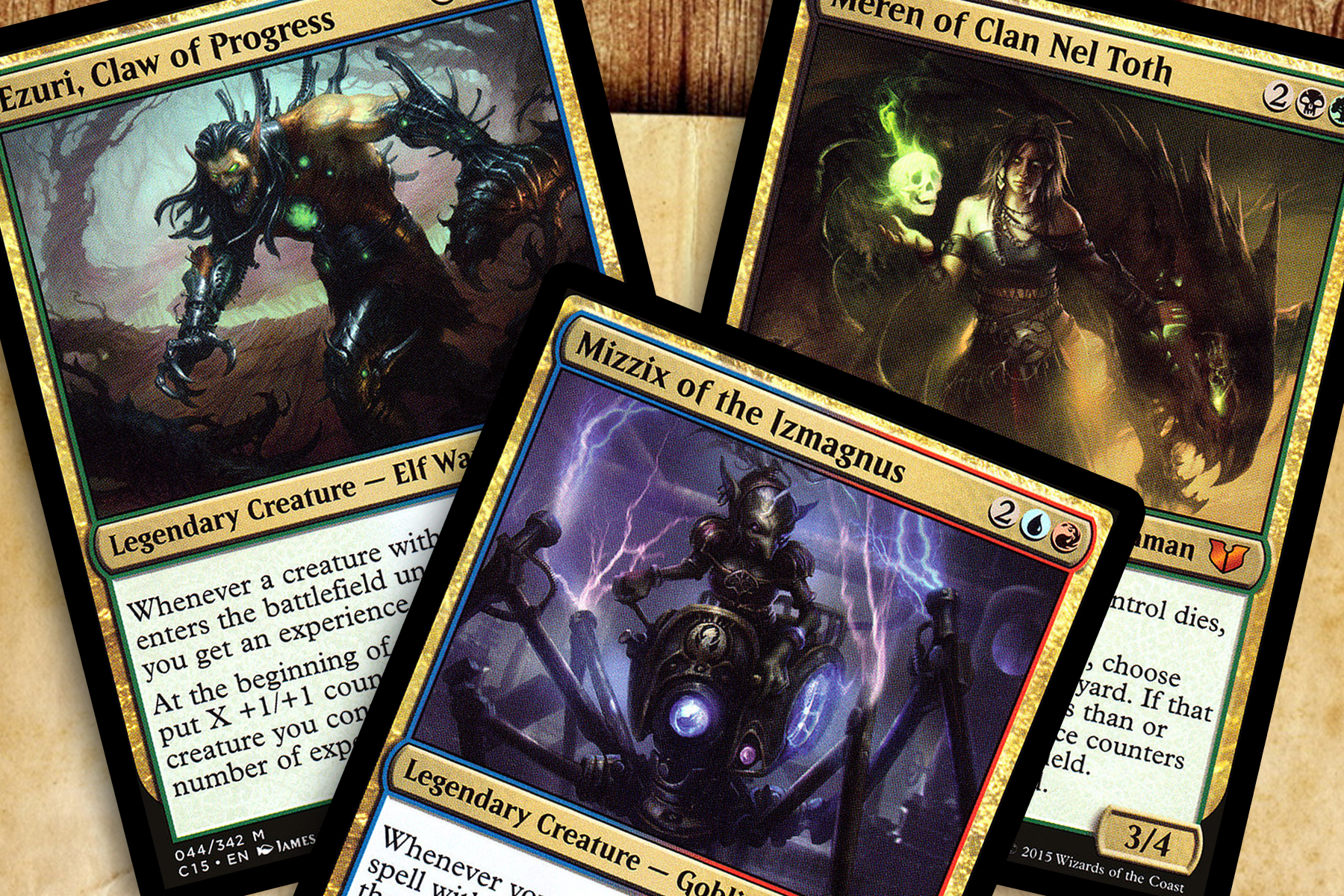
Must Have Experience
“Commander 2015,” he sighed as he started the next paragraph.
Almost a year later, Commander players received Commander 2015, a two-color themed series of preconstructed decks that introduced experience counters which players accrued—but never lost—by playing with the marquee generals for each deck. I wish I could say that only one of these was an issue; but as I see it, three of the marquee generals were turbulent to varying degrees.
The most benign of the three was Ezuri, Claw of Progress simply for how he warped the politics of games he entered. The gimmick being that to collect more experience counters you would play very small creatures didn’t read as especially problematic, as green loves big creatures and blue is creature-light. The problem was that Ezuri converted your experience counter into +1/+1 counters every turn. What resulted after a few turns was that the Ezuri player would ascend to the status of an impromptu Archenemy. By all accounts, the compleated elf’s popularity waned and he has become very forgettable.
Depending on your experience, runner-up status goes to Mizzix of the Izmagnus, though some may debate that it outclasses my number one. By utilizing your mana curve effectively after casting Mizzix, she generally enabled a very potent Storm archetype that felt like the return of Narset but with noticeably less attack steps. Thank god they didn’t have Paradox Engine yet. This had an abrupt big swing on the format as answers like Arcane Laboratory and Rule of Law became important staples for control decks to stem the bleeding. Mizzix’s reign eventually ended and calm returned.
Finally, Meren of Clan Nel Toth. This deck still stays on my radar and might be the only deck spotlighted today that I keep in mind as I construct decks. Green/Black is pretty good about getting creatures into the graveyard if it will benefit them, so Meren plays right into that niche. For fear of endless reanimation cycles, the community had to start packing more graveyard hate—something we’d forgotten after years of not being abused by graveyards—and be prepared to protect against any silver bullets the Meren pilot might have slotted into fight the hate. This deck was and is still powerful.
One takeaway: notice that I wasn’t specific about what each of these decks ran. That’s because the variety of what worked for each deck was diverse. From a game theory perspective, these generals created an interesting new metagame at the height of their popularity, one where you had to choose which kinds of decks you wanted to be strong or weak to. I believe that experience counters were not bad, but what magnified the problems was the flexibility that each general allowed for.
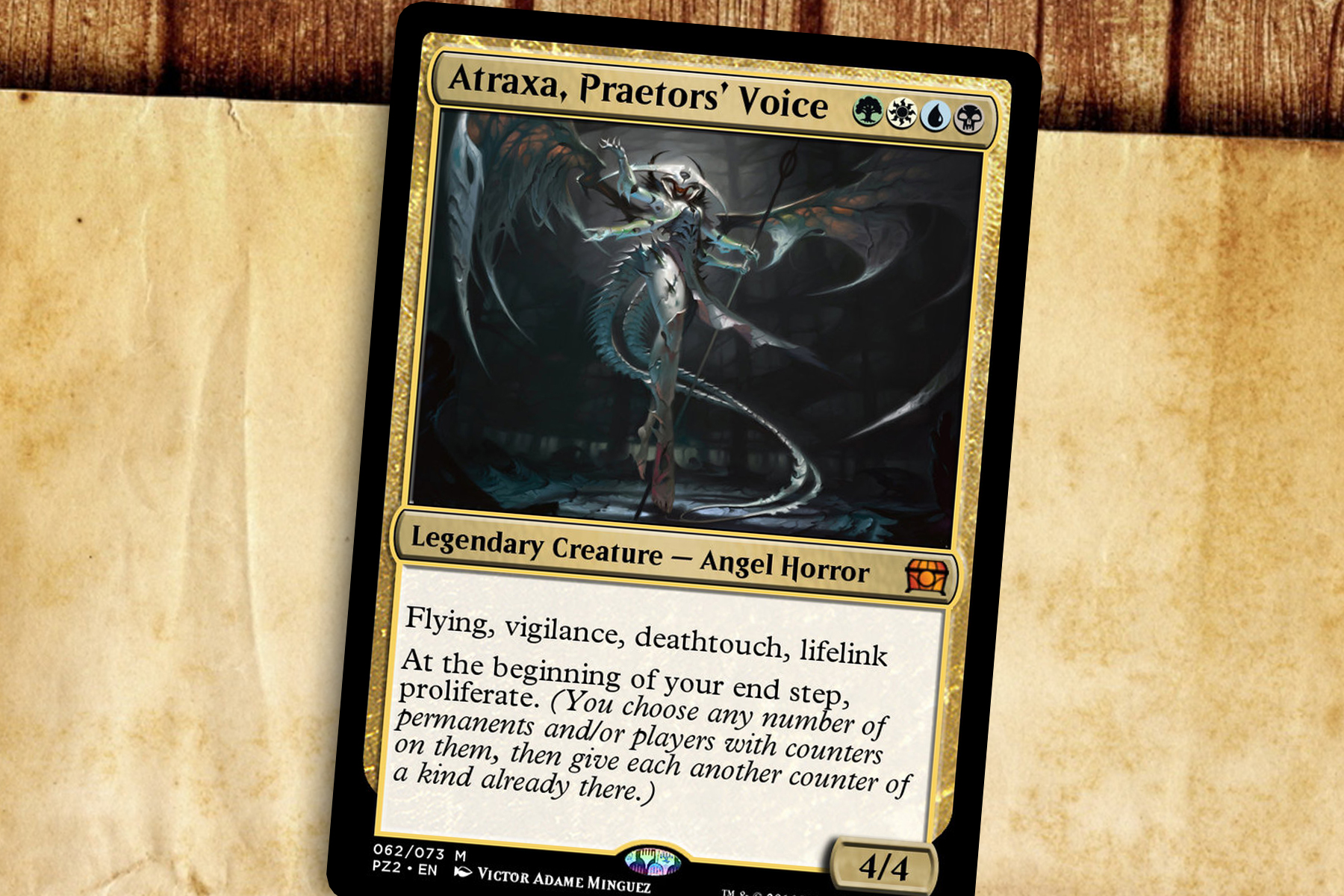
Indomitable Popularity
Dear Atraxa players,
You’re not a problem, there are just so many of you.
The last stop on the timeline is extremely recent and frankly is a different kind of infamy, Atraxa, Praetors’ Voice. Coming out of Commander 2016 we got our four-color generals and while they were not especially oppressive, they are all wildly popular and still everywhere I look when I get into various shops and look around the tables. Atraxa is the most popular general on EDHrec by a very wide margin. Three decks exist in my main group, and countless exist on MTGO.
Any issues I have with Atraxa have very little to do with the deck being too powerful, but simply being too “solved” and ultimately amounting to being either Four Color Infect or Super Friends. I saw it too when she was previewed—if you think it’s clever, it’s not. This is probably my “get off my lawn” moment, but I am a little annoyed by the lack of innovation coming out of the deck and I never feel especially impressed with the small changes I see.
Is creativity and innovation the purpose of the format? No, having fun is. But I just wish this popular general was popular for versatility and not two gimmicks.
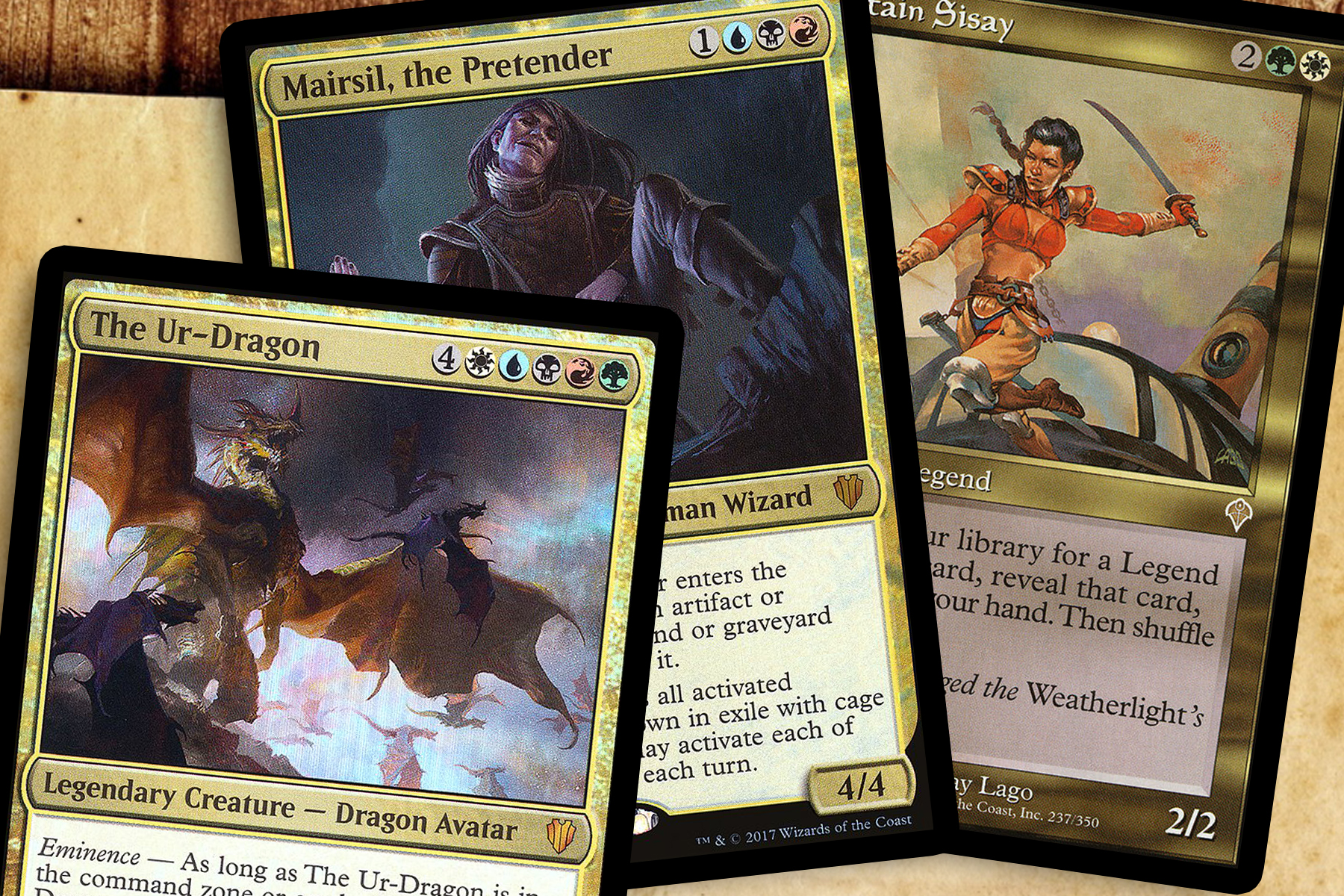
Future Sight
To me, Commander will always be a successful and popular format as long as people enjoy playing games with each other. To briefly look to the future, the potential problem generals I foresee are The Ur-Dragon, Mairsil, the Pretender, and Captain Sisay.
The Ur-Dragon is powerful general capable of winning the game in any number of ways once it hits play. This is not to discount it’s passive Eminence ability—removing one mana from the cost of all your dragons does more work than it lets on. If Game of Thrones has taught us anything, the person with dragons has power.
Mairsil, the Pretender is the kind of general that already has a powerful two- or three-card interactions just waiting to be uncovered, but may take some time to develop like Glissa, the Traitor. If Mairsil proves to be powerful, I think the decks could thrive in great variety, but enough consistency and they will be a force to reckon with.
Lastly, with the new changes to the Legendary Rule by way of Planeswalkers now being included in the pool of legendary permanents, I think the stock on Captain Sisay will rise. With the ability to now feed a Green/White Super Friends deck, I worry that she has the potential to overstay her welcome. This may fall more into the Atraxa level of commonality instead of the oppressiveness of a Glissa or Narset, but I forecast a few salty tears nonetheless.
If you’ve made it through both halves, I feel eternally blessed, but that’s my time for the week. As always, you can find my on Twitter to berate me on my inaccurate history of these generals. I love discussion and feedback is the lifeblood of content creation, so I hope this can stir another conversation up. Until next time, thank you.

